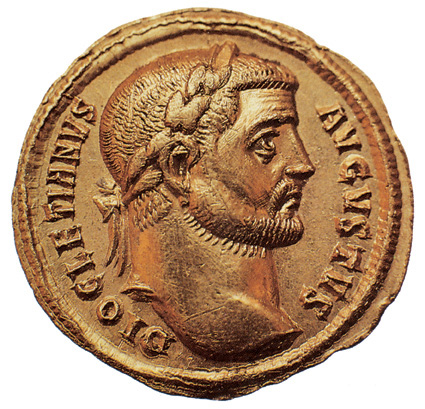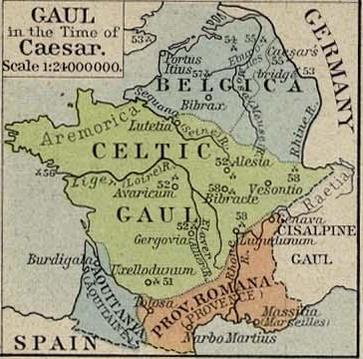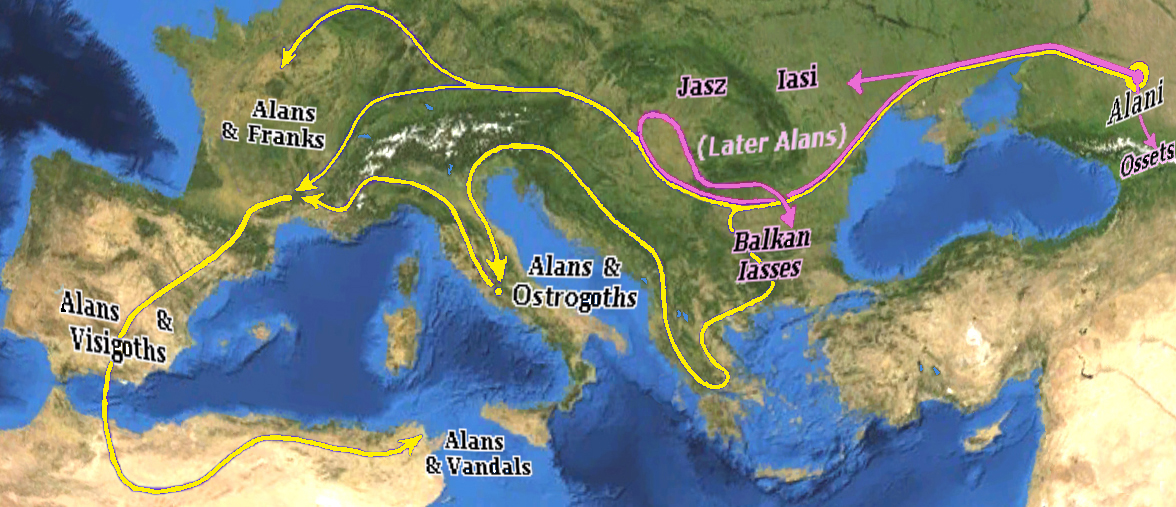|
Maxen
Magnus Maximus (; cy, Macsen Wledig ; died 8 August 388) was Roman emperor of the Western Roman Empire from 383 to 388. He usurped the throne from emperor Gratian in 383 through negotiation with emperor Theodosius I. He was made emperor in Britannia and Gaul the next year while Gratian's brother Valentinian II retained Italy, Pannonia, Hispania, and Africa. In 387, Maximus's ambitions led him to invade Italy, resulting in his defeat by Theodosius I at the Battle of Poetovio in 388. In the view of some historians, his death marked the end of direct imperial presence in Northern Gaul and Britain. Life Birth, army career Maximus was born in Gallaecia, on the estates of Count Theodosius (the Elder) of the Theodosian dynasty, to whom he claimed to be related.J. B. Bury ed. (1924)''The Cambridge Medieval History'' p. 238 Maximus was a distinguished general; he was probably a junior officer in Britain in 368, during the quelling of the Great Conspiracy. He served under Count Theodo ... [...More Info...] [...Related Items...] OR: [Wikipedia] [Google] [Baidu] |
Western Roman Empire
The Western Roman Empire comprised the western provinces of the Roman Empire at any time during which they were administered by a separate independent Imperial court; in particular, this term is used in historiography to describe the period from 395 to 476, where there were separate coequal courts dividing the governance of the empire in the Western and the Eastern provinces, with a distinct imperial succession in the separate courts. The terms Western Roman Empire and Eastern Roman Empire were coined in modern times to describe political entities that were ''de facto'' independent; contemporary Romans did not consider the Empire to have been split into two empires but viewed it as a single polity governed by two imperial courts as an administrative expediency. The Western Roman Empire collapsed in 476, and the Western imperial court in Ravenna was formally dissolved by Justinian in 554. The Eastern imperial court survived until 1453. Though the Empire had seen periods wit ... [...More Info...] [...Related Items...] OR: [Wikipedia] [Google] [Baidu] |
Aquileia
Aquileia / / / / ;Bilingual name of ''Aquileja – Oglej'' in: vec, Aquiłeja / ; Slovenian: ''Oglej''), group=pron is an ancient Roman city in Italy, at the head of the Adriatic at the edge of the lagoons, about from the sea, on the river Natiso (modern Natisone), the course of which has changed somewhat since Roman times. Today, the city is small (about 3,500 inhabitants), but it was large and prominent in classical antiquity as one of the world's largest cities with a population of 100,000 in the 2nd century AD and is one of the main archaeological sites of northern Italy. In late antiquity the city was the first city in the Italian Peninsula to be sacked by Attila the Hun. History Classical Antiquity Roman Republic Aquileia was founded as a colony by the Romans in 180/181 BC along the Natiso River, on land south of the Julian Alps but about north of the lagoons. The colony served as a strategic frontier fortress at the north-east corner of transpadane I ... [...More Info...] [...Related Items...] OR: [Wikipedia] [Google] [Baidu] |
Solidus (coin)
The ''solidus'' (Latin 'solid'; ''solidi'') or nomisma ( grc-gre, νόμισμα, ''nómisma'', 'coin') was a highly pure gold coin issued in the Late Roman Empire and Byzantine Empire. Constantine introduced the coin, and its weight of about 4.5 grams remained relatively constant for seven centuries. In the Byzantine Empire, the solidus or nomisma remained a highly pure gold coin until the 11th century, when several Byzantine emperors began to strike the coin with less and less gold. The nomisma was finally abolished by Alexius I in 1092, who replaced it with the hyperpyron, which also came to be known as a "bezant". The Byzantine solidus also inspired the originally slightly less pure dinar issued by the Muslim Caliphate. In Western Europe, the solidus was the main gold coin of commerce from late Roman times to Pepin the Short's currency reform, which introduced the silver-based pound/shilling/penny system. In Late Antiquity and the Middle Ages, the solidus also fu ... [...More Info...] [...Related Items...] OR: [Wikipedia] [Google] [Baidu] |
Africa Province
Africa Proconsularis was a Roman province on the northern African coast that was established in 146 BC following the defeat of Carthage in the Third Punic War. It roughly comprised the territory of present-day Tunisia, the northeast of Algeria, and the coast of western Libya along the Gulf of Sirte. The territory was originally inhabited by Berber people, known in Latin as ''Mauri'' indigenous to all of North Africa west of Egypt; in the 9th century BC, Phoenicians built settlements along the Mediterranean Sea to facilitate shipping, of which Carthage rose to dominance in the 8th century BC until its conquest by the Roman Republic. It was one of the wealthiest provinces in the western part of the Roman Empire, second only to Italy. Apart from the city of Carthage, other large settlements in the province were Hadrumetum (modern Sousse, Tunisia), capital of Byzacena, and Hippo Regius (modern Annaba, Algeria). History Rome's first province in northern Afri ... [...More Info...] [...Related Items...] OR: [Wikipedia] [Google] [Baidu] |
Bauto
Flavius Bauto (died c. 385) was a Romanised Frank who served as a '' magister militum'' of the Roman Empire and imperial advisor under Valentinian II. Biography When the usurper Magnus Maximus invaded Italy in an attempt to replace Valentinian II, Bauto led military defence against him. According to bishop Ambrose, Maximus accused Bauto of attacking him with barbarian troops and intending to establish a puppet emperor in the figure of Valentinian II to acquire sovereignty for himself. In matters of religion, Bauto was likely a Christian. He and Rumoridus, who was pagan, were present before Valentinian II when Ambrose successfully convinced the emperor against Quintus Aurelius Symmachus' proposal to restore the pagan Altar of Victory, which had been earlier removed from the Senate of Rome. Afterwards, the two men went along with Valentinian II's decision. He became a consul in 385 but died soon after, likely of natural causes. Afterwards, his daughter Aelia Eudoxia resid ... [...More Info...] [...Related Items...] OR: [Wikipedia] [Google] [Baidu] |
Lugdunum
Lugdunum (also spelled Lugudunum, ; modern Lyon, France) was an important Roman city in Gaul, established on the current site of Lyon. The Roman city was founded in 43 BC by Lucius Munatius Plancus, but continued an existing Gallic settlement with a likely population of several thousands. It served as the capital of the Roman province of Gallia Lugdunensis and was an important city in the western half of the Roman Empire for centuries. Two emperors, Claudius and Caracalla, were born in Lugdunum. In the period 69–192 AD, the city's population may have numbered 50,000 to 100,000, and possibly up to 200,000 inhabitants. The original Roman city was situated west of the confluence of the Rhône and Saône, on the Fourvière heights. By the late centuries of the empire much of the population was located in the Saône River valley at the foot of Fourvière. Name The Roman city was founded as ''Colonia Copia Felix Munatia'', a name invoking prosperity and the blessing of t ... [...More Info...] [...Related Items...] OR: [Wikipedia] [Google] [Baidu] |
Lutetia
The Gallo-Roman town of ''Lutetia'' (''Lutetia Parisiorum'' in Latin, in French ''Lutèce'') was the predecessor of the modern-day city of Paris. It was founded in about the middle of the 3rd century BCE by the Parisii, a Gallic tribe. Traces of an earlier Neolithic settlement have also been found at the former site of the city. Lutetia was an important crossing point of the Seine, and was located at the intersection of land and water trade routes. In the 1st century BCE, it was conquered by Romans and was gradually rebuilt into a Roman city. Ruins including a forum, amphitheater, and Roman baths still remain. In the 5th century it became the capital of the Merovingian dynasty of French kings, and thereafter was known simply as Paris. Etymology The settlement is attested in Ancient Greek as ''Loukotokía'' (Λoυκoτοκία) by Strabo and ''Leukotekía'' (Λευκοτεκία) by Ptolemy. Likely origins are Celtic root "Lut" meaning "a swamp or marsh", or the Latin term ... [...More Info...] [...Related Items...] OR: [Wikipedia] [Google] [Baidu] |
Gaul
Gaul ( la, Gallia) was a region of Western Europe first described by the Romans. It was inhabited by Celtic and Aquitani tribes, encompassing present-day France, Belgium, Luxembourg, most of Switzerland, parts of Northern Italy (only during Republican era, Cisalpina was annexed in 42 BC to Roman Italy), and Germany west of the Rhine. It covered an area of . According to Julius Caesar, Gaul was divided into three parts: Gallia Celtica, Belgica, and Aquitania. Archaeologically, the Gauls were bearers of the La Tène culture, which extended across all of Gaul, as well as east to Raetia, Noricum, Pannonia, and southwestern Germania during the 5th to 1st centuries BC. During the 2nd and 1st centuries BC, Gaul fell under Roman rule: Gallia Cisalpina was conquered in 204 BC and Gallia Narbonensis in 123 BC. Gaul was invaded after 120 BC by the Cimbri and the Teutons, who were in turn defeated by the Romans by 103 BC. Julius Caesar finally subdued the remaining p ... [...More Info...] [...Related Items...] OR: [Wikipedia] [Google] [Baidu] |
Indo-Iranian Languages
The Indo-Iranian languages (also Indo-Iranic languages or Aryan languages) constitute the largest and southeasternmost extant branch of the Indo-European language family (with over 400 languages), predominantly spoken in the geographical subregion of Southern Asia. They have more than 1.5 billion speakers, stretching from Europe (Romani), Mesopotamia (Kurdish languages, Zaza–Gorani and Kurmanji Dialect continuum) and the Caucasus ( Ossetian, Tat and Talysh) eastward to Xinjiang ( Sarikoli) and Assam (Assamese), and south to Sri Lanka ( Sinhala) and the Maldives ( Maldivian), with branches stretching as far out as Oceania and the Caribbean for Fiji Hindi and Caribbean Hindustani respectively. Furthermore, there are large diaspora communities of Indo-Iranian speakers in northwestern Europe (the United Kingdom), North America (United States, Canada), Australia, South Africa, and the Persian Gulf Region (United Arab Emirates, Saudi Arabia). The common ancestor of all of ... [...More Info...] [...Related Items...] OR: [Wikipedia] [Google] [Baidu] |
Alans
The Alans (Latin: ''Alani'') were an ancient and medieval Iranian nomadic pastoral people of the North Caucasus – generally regarded as part of the Sarmatians, and possibly related to the Massagetae. Modern historians have connected the Alans with the Central Asian Yancai of Chinese sources and with the Aorsi of Roman sources. Having migrated westwards and becoming dominant among the Sarmatians on the Pontic–Caspian steppe, the Alans are mentioned by Roman sources in the . At that time they had settled the region north of the Black Sea and frequently raided the Parthian Empire and the Caucasian provinces of the Roman Empire. From the Goths broke their power on the Pontic Steppe. Upon the Hunnic defeat of the Goths on the Pontic Steppe around , many of the Alans migrated westwards along with various Germanic tribes. They crossed the Rhine in 406CE along with the Vandals and Suebi, settling in Orléans and Valence. Around 409 CE they joined the Vandals and S ... [...More Info...] [...Related Items...] OR: [Wikipedia] [Google] [Baidu] |
Scoti
''Scoti'' or ''Scotti'' is a Latin name for the Gaels,Duffy, Seán. ''Medieval Ireland: An Encyclopedia''. Routledge, 2005. p.698 first attested in the late 3rd century. At first it referred to all Gaels, whether in Ireland or Great Britain, but later it came to refer only to Gaels in northern Britain. The kingdom to which their culture spread became known as '' Scotia'' or Scotland, and eventually all its inhabitants came to be known as Scots. History An early use of the word can be found in the ''Nomina Provinciarum Omnium'' (Names of All the Provinces), which dates to about AD 312. This is a short list of the names and provinces of the Roman Empire. At the end of this list is a brief list of tribes deemed to be a growing threat to the Empire, which included the ''Scoti'', as a new term for the Irish. There is also a reference to the word in St Prosper's chronicle of AD 431 where he describes Pope Celestine sending St Palladius to Ireland to preach "''ad Scotti in Christ ... [...More Info...] [...Related Items...] OR: [Wikipedia] [Google] [Baidu] |
Picts
The Picts were a group of peoples who lived in what is now northern and eastern Scotland (north of the Firth of Forth) during Late Antiquity and the Early Middle Ages. Where they lived and what their culture was like can be inferred from early medieval texts and Pictish stones. Their Latin name, , appears in written records from the 3rd to the 10th century. Early medieval sources report the existence of a distinct Pictish language, which today is believed to have been an Insular Celtic language, closely related to the Brittonic spoken by the Britons who lived to the south. Picts are assumed to have been the descendants of the Caledonii and other Iron Age tribes that were mentioned by Roman historians or on the world map of Ptolemy. The Pictish kingdom, often called Pictland in modern sources, achieved a large degree of political unity in the late 7th and early 8th centuries through the expanding kingdom of Fortriu, the Iron Age Verturiones. By the year 900, the result ... [...More Info...] [...Related Items...] OR: [Wikipedia] [Google] [Baidu] |
_A_king%2C_possibly_Magnus_Maximus%2C_holding_a_sceptre.jpg)





_01.jpg)


